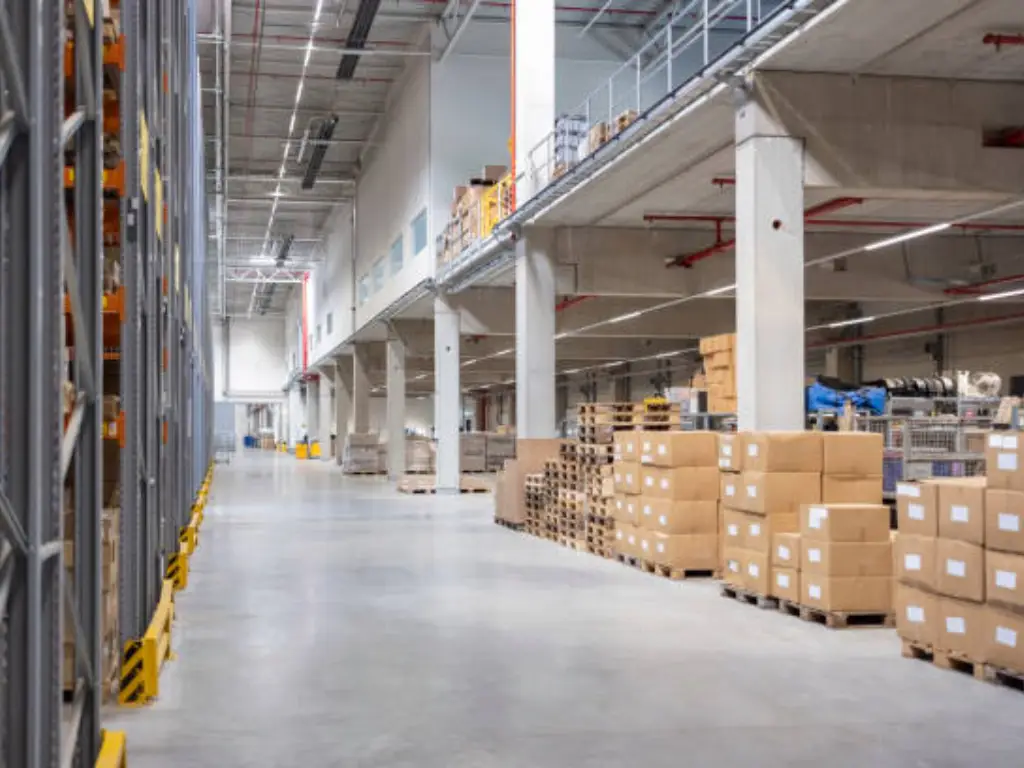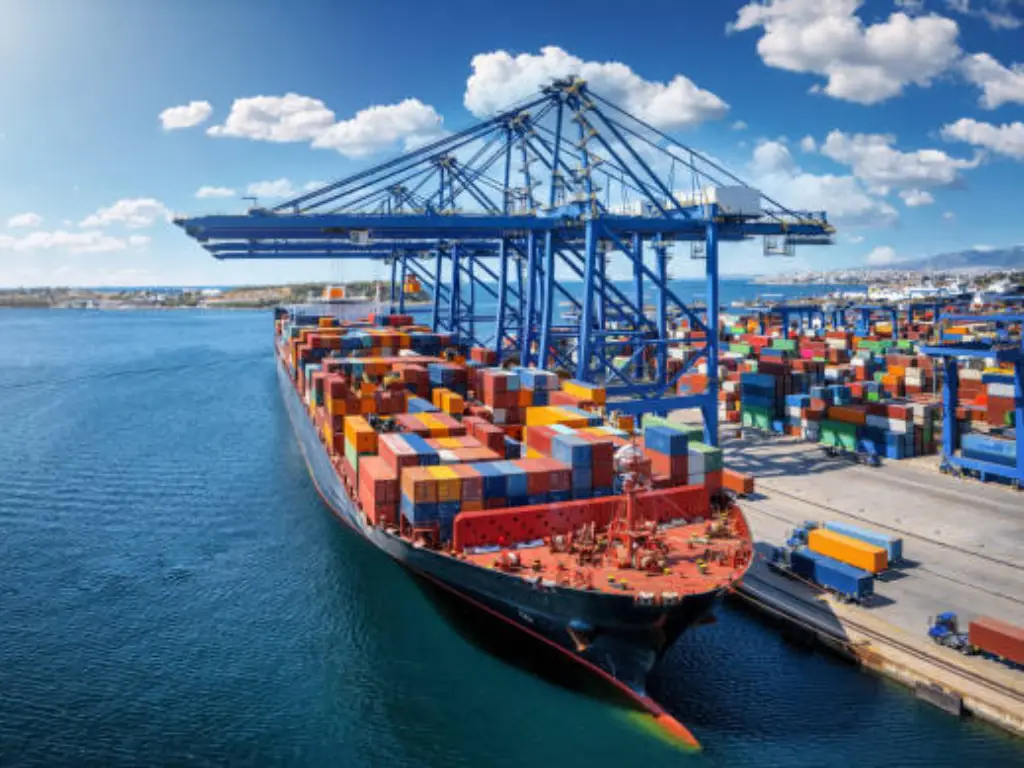Introduction
In the modern fast-changing global market, companies of any size are being challenged to reconsider their procurement strategy. Why? Since customers demand cheaper prices, quicker delivery, and improved product quality, economic conditions, trade regulations, and availability of raw materials are changing at the speed of lightning. Global sourcing has become a strategic tool that assists companies to overcome these complexities, not only to survive but to grow sustainably. Whether it is a startup or a fortune 500, an increasing number of companies are looking beyond the borders to access new markets, skilled labor and cost efficiencies.
It is not about a couple of dollars. We are discussing the creation of supply chain resilience, the availability of global sourcing programs that enhance innovation, and the attainment of competitive advantage through global efficiencies. Whether you’re in tech, apparel, or manufacturing, ignoring the benefits of global sourcing today is like using a flip phone in the age of smartphones. Global sourcing is not a luxury anymore; it is a necessity.
Defining Global Sourcing
What Is Global Sourcing?

So… what is global sourcing? In simple terms, it is the act of buying goods and services from foreign suppliers to enjoy cheaper prices, quality, or other operational advantages. In contrast to the conventional procurement models, global sourcing does not limit its search to the domestic boundaries, but instead it searches for value in the form of reduced cost of production, new suppliers, or access to specialized knowledge. It is like shopping globally, only that it is your business.
The global sourcing process entails a lot of research, due diligence, supplier management, and strategic partnerships to maintain a consistent, high-quality supply. This is not only about cost reduction, but also about aligning procurement strategy with bigger business objectives, such as market expansion and risk management. Firms that use international sourcing tend to have superior supplier performance, cost effectiveness, and bottom-line performance.
Global Sourcing vs. Outsourcing vs. Offshoring

Let us get it straight. These are terms that are thrown around like interchangeable buzzwords, yet they are not. Outsourcing is the process of hiring third parties to perform certain business processes, such as IT or customer service, and may be domestic or foreign. Offshoring, however, is all about moving operations to a different country, usually to take advantage of cheaper labor.
Global sourcing is more comprehensive. It entails the process of finding and contracting potential suppliers in various countries of raw materials, components or finished products, but without losing control of other business activities. It is possible to outsource without global sourcing and vice versa. However, the sweet spot of many companies is to have a hybrid of the two that suits their sourcing strategy.
| Aspect | Global Sourcing | Outsourcing | Offshoring |
|---|---|---|---|
| Definition | Procuring goods/services from international suppliers to gain strategic advantages. | Hiring external parties (domestic or international) to perform specific functions. | Relocating business operations to another country to reduce costs. |
| Primary Objective | Cost efficiency, quality, access to global resources and innovation. | Focus on operational efficiency and reducing internal workload. | Mainly cost reduction, especially labor and operational expenses. |
| Geographical Focus | Cross-border, but supplier location depends on strategic value. | Can be domestic or international. | Always involves international relocation. |
| Business Control | Core operations remain internal; procurement is external. | Process is handed off to a third party. | Operations may be owned or managed abroad directly. |
| Use Cases | Sourcing raw materials, components, finished goods from global suppliers. | Outsourcing IT, HR, customer support, logistics, manufacturing, etc. | Setting up call centers, factories, or development teams overseas. |
| Risk Factors | Quality control, supply chain disruption, cultural/regulatory differences. | Loss of control, dependency on third-party performance. | Geopolitical risk, language barriers, regulatory compliance, brand perception. |
| Level of Integration | Integrated into procurement and supply chain strategies. | External to core operations, often service-focused. | Part of the company’s operational structure, but in a foreign location. |
| Typical Industries | Manufacturing, retail, consumer goods, tech hardware. | Tech, e-commerce, logistics, customer service. | Manufacturing, software development, support services. |
| Example | Sourcing components from Germany and raw materials from India. | Hiring a third-party company to manage payroll or customer service. | Opening a factory in Vietnam to manufacture goods at a lower cost. |
Dropshipping and Global Sourcing: A Practical Match
Dropshipping is a lean e-commerce business model in which products are shipped directly by suppliers to customers- no inventory required. It is an effective type of global sourcing, which uses foreign suppliers to provide cheaper prices, quicker market penetration, and flexibility in operations.
With that said, dropshipping requires trustworthy international partners. Quality, speed of shipping, and consistency of the supplier are paramount, and the selection of the sourcing platform is more crucial than ever.
Key Characteristics of Global Sourcing
Effective global sourcing does not only mean selecting the lowest cost supplier overseas. The most important characteristics are strategic approach, due diligence, and risk management. Businesses need to consider supplier relationships, financial stability, and regulatory compliance. Other must-haves? Strong quality control, effective communication across time zones, and awareness of economic issues such as trade tariffs and currency fluctuations.
Adaptability is another characteristic feature. Whether it is the use of global sourcing platforms or dealing with language barriers, it is the capability to overcome the challenges that distinguishes the professionals and the amateurs. Companies that focus on good relations, ethical conduct, and communication tend to establish long-term success in global sourcing.
Evolution and Growth of Global Sourcing
Historical Context and Globalization
Global sourcing has a long history, dating back centuries–consider the Silk Road trade routes and colonial supply chains. However, the contemporary notion was developed in the late 20 th century, with the impetus of globalization, economic liberalization, and the enhancement of supply chain management. The emergence of global markets not only provided the opportunity but also the need to have businesses seek outside their borders in terms of cost savings and innovation.
The 1990s experienced a boom in global sourcing as trade tariffs were lowered, new economies of scale were created and global logistics were enhanced. Firms began to understand that international procurement would enable them to compete not just on price, but on product quality, lead times and availability. In a flash, the domestic sourcing was not necessarily the most efficient path anymore- and the global supply chain revolution was born.
Impact of Technology on Modern Sourcing
Cut to the present day, and global sourcing is supported by technology. Businesses are now able to assess thousands of vendors in a few seconds with the assistance of AI in procurement, digital platforms, and real-time supplier management tools. Even the supply chain risk management has become digitalized, allowing companies to be proactive in responding to disruptions, i.e., pandemics, geopolitical tensions, or natural disasters.
Better still? Predictive analytics and blockchain are improving transparency and quality standards, and supplier performance is easier to track, and regulatory compliance is more likely. Solutions such as SAP Ariba or Coupa are not optional anymore; they are necessities in the contemporary global sourcing strategies. The bottom line is that unless your business is using technology in your global sourcing strategy, you are leaving efficiency and money on the table.
Major Types of Global Sourcing Strategies
Direct vs. Indirect Sourcing
Let us simplify it. Direct sourcing is the process of buying directly to the manufacturer or supplier without involving the middlemen. This usually leads to improved prices, improved relationships and quality control. On the one hand, it is more resource-intensive and needs good contract management.
Indirect sourcing, on the other hand, is the purchase of goods via a third party such as distributors or resellers. Although it can be a little more expensive, it can be less risky and less resource-intensive. Each is appropriate in its own way, direct sourcing is best suited to high-value, strategic goods, whereas indirect is more appropriate when the goods are general-purpose or when the maturity of the global sourcing process is low.
| Aspect | Direct Sourcing | Indirect Sourcing |
| Definition | Buying directly from manufacturers or suppliers | Purchasing through third parties such as distributors/resellers |
| Pricing | Usually more cost-effective due to elimination of middlemen | Typically more expensive due to added margin from intermediaries |
| Relationship | Closer supplier relationships | Limited direct interaction with original supplier |
| Quality Control | Easier to control and ensure product quality | Less control over quality standards |
| Risk | Higher risk due to direct responsibility and management | Lower risk due to reliance on intermediaries |
| Resource Requirement | More resource-intensive; requires strong procurement skills | Less resource-intensive; simpler process |
| Contract Management | Requires robust contract and vendor management | Generally simpler agreements |
| Best Suited For | High-value, strategic, or customized goods | General-purpose or non-strategic goods |
| Flexibility | Lower flexibility in switching suppliers | Higher flexibility due to multiple supplier options |
| Use Case | When control and customization are key | When efficiency and ease of procurement are prioritized |
Nearshoring, Offshoring, Onshoring
These are terms that are used to refer to the geographical nature of global sourcing. Nearshoring is the practice of using suppliers that are geographically near you (think Mexico to U.S. companies). It assists in minimizing lead times and time zone headaches. Offshoring is even more distant- such as using Asia or Eastern Europe to get significant cost advantages.
Onshoring? That is domestic sourcing. It can provide simpler regulatory compliance and simpler logistics but usually at a greater cost of production. A hybrid approach, which is a combination of all three, is now being used by many companies to achieve a balance between operational costs, speed and risk. There is no one-size-fits-all in this case, and your supply chain strategy must be based on your business requirements.
| Aspect | Nearshoring | Offshoring | Onshoring |
| Definition | Sourcing from nearby or neighboring countries | Sourcing from distant countries, often overseas | Sourcing domestically within the same country |
| Geographical Distance | Close proximity | Far distance | Local or national |
| Lead Times | Shorter lead times | Longer lead times | Shortest lead times |
| Time Zone Challenges | Fewer time zone issues | Significant time zone differences | No time zone issues |
| Cost Efficiency | Moderate cost savings | Highest cost savings | Highest production costs |
| Logistics Complexity | Simplified logistics compared to offshoring | More complex logistics and longer shipping times | Simplest logistics |
| Regulatory Compliance | Easier compliance due to regional similarity | Potential regulatory and compliance challenges | Simplest due to domestic regulations |
| Risk Level | Balanced risk (political, operational) | Higher geopolitical and operational risks | Lowest risk |
| Communication | Easier communication due to cultural and language similarity | Potential language and cultural barriers | Easiest communication |
| Best Use Case | When balance between cost and proximity is needed | When minimizing cost is the top priority | When control, quality, and simplicity are most important |
Benefits of Global Sourcing for Businesses

Cost Efficiency and Competitive Advantage
One of the most noticeable benefits of global sourcing is that different suppliers from other countries offer lower prices, mostly due to cheaper labor, raw materials, or tax breaks. Sourcing for international industries allows companies to cut down production costs. It’s not just about pursuing a bargain since industry-to-industry logistics also require long-term cost efficiency while delivering goods and providing after-sales services. These advantages of global sourcing give companies more financial flexibility to allocate resources strategically.
This unlocks a major competitive advantage, which is faster and competitive innovation, reinvesting savings in. When attention is paid to global sourcing, capturing contracts, active tracking of supplier performance, and diligence during execution aids strategic sourcing management instead of falling back on mere tactics like slashing expenses, investing in robust contract management becomes critical.
Innovation and Access to Global Talent
Global sourcing unleashes the gates of innovation. Through networking with a wide range of suppliers in the international market, businesses can access skilled labor, new technologies, and rare materials that are not locally available. It could be precision parts in Japan, sustainable fabrics in India, or AI-based solutions in Eastern Europe, but global sourcing can assist in introducing innovative ideas to your product pipeline.
This sourcing of specialized talent and resources is also becoming a competitive differentiator. Not only are diversified supply networks more innovative, but more flexible as well, capable of adapting to changes in the market and driving their industries with nimbleness.
Scalability and Supply Chain Flexibility
Flexibility is a superpower in an uncertain world. A clever global sourcing strategy means that companies are no longer reliant on one area or supplier. They are able to ramp up production by adding international suppliers, or rapidly switch to alternatives when faced with supply chain disruptions, seasonal surges, or geopolitical events.
This international flexibility enables companies to match sourcing activities with the changing market needs, geographical expansions, or even temporary experimentation of new product lines. It’s like constructing a modular supply chain—you can plug in and out of resources. This ability to diversify suppliers and tap into global sourcing initiatives results in not only higher quality products but also improved adaptability to market shifts. Such supply chain flexibility leads to better risk management, increased responsiveness, and eventually, an improved bottom line as companies stay ahead in the ever-evolving global sourcing landscape.
Global Sourcing Meets Dropshipping
The combination of the advantages of global sourcing and the asset-light model of dropshipping allows businesses to test markets fast, minimize inventory expenses, and go global. The use of a global supply chain to maximize pricing and product diversification is important in developing a competitive advantage in the e-commerce arena.
Nonetheless, effective dropshipping depends on a stable and reliable supplier network- this is where SpeedBee Dropshipping comes in to provide a lot of value to businesses.
Key Challenges and Risks
Supply Chain Complexity and Risk Management
Global sourcing is not all roses and rainbows, let’s be honest. A more complex supply chain is one of the major obstacles. When your suppliers are located in different countries, you have different shipping routes, regulations, and economic conditions. Even a minor hitch, such as political instability or a port strike, can cause severe supply chain problems.
That is where good supply chain risk management comes in. Businesses need to find weaknesses, develop contingencies, and apply data-based tools to predict issues before they become serious. Unless this is done proactively, global sourcing cost savings can be erased by one disruption. It is not only about logistics management, but it is also about safeguarding your business continuity.
Compliance, Culture, and Communication Barriers
Dealing with foreign suppliers implies going through a labyrinth of regulatory compliance problems. Whether it is quality certifications or environmental regulations, failure to meet a legal requirement in a country may result in financial or reputational impacts. Then there is the human element, language barriers, time zones and cultural misunderstandings may impede effective communication.
To address these challenges, businesses are advised to invest in cultural training, multilingual communication tools, and localized contract support. It is important to establish good relations founded on trust and understanding. You cannot just send emails; you must have actual conversation. Since in global sourcing, people are as important as processes.
Future Trends in Global Sourcing
In the future, global sourcing is moving into a new era, which is characterized by sustainability, digitization, and automation. Environmental, social, and governance (ESG) standards are no longer optional; they are becoming requirements. Companies are being forced to make sure that they have ethical labor standards, minimize carbon footprints, and contribute to the local communities, even internationally.
In come digital sourcing platforms and AI. These tools allow making smarter decisions, providing real-time analytics, supplier ratings, and even predictive risk modeling. The use of AI in procurement is not a myth, and it is assisting organisations to simplify the procurement process, automate routine activities, and enhance supplier performance in the long run.
There is also an increase in strategic alliances that are not just mere transactions. Firms are co-innovating with suppliers, investing in global sourcing programs, and developing adaptive networks that can react to market changes with speed. The world of global sourcing is changing rapidly and only innovative ones will remain on the edge.
Make Global Sourcing More Efficient with SpeedBee Dropshipping
If you’re looking to kickstart or scale your cross-border e-commerce business through global sourcing, SpeedBee Dropshipping offers an all-in-one solution to connect you with high-quality global suppliers.
- Automated product and inventory sync
- Multi-platform support (Shopify, WooCommerce, etc.)
- Fast and reliable shipping
- Carefully vetted suppliers and strict quality control
- Dedicated customer support
Whether you’re a first-time entrepreneur or a growing brand, SpeedBee can be your powerful partner for building a strong supply chain and running an efficient operation.
Visit speedbeedropshipping now and start your Global Sourcing Dropshipping journey!
Conclusion
So… what is global sourcing once more? It is not only about purchasing abroad. It is a tactical way of developing a more robust, adaptable, and cost-efficient supply chain. When properly implemented, it brings real benefits: cost reduction, access to international talent, accelerated growth, and a more robust operation in general.
With that said, global sourcing is not for the weak-hearted. It requires a lot of research, quality standards, and a clear fit with your overall procurement strategy. Begin with a small scale, perhaps with a single product line, and work on developing robust, ethical, and compliant supplier networks. As time goes by, grow and diversify as your team becomes more confident and insightful.
In the current globalized world, global sourcing is the internet in the 2000s. The dangers are not imaginary, nor are the rewards. It is not a trend, but a competitive need. Train your team, select the appropriate partners, and be proactive and thoughtful. Your bottom line and your future supply chain will appreciate it.



